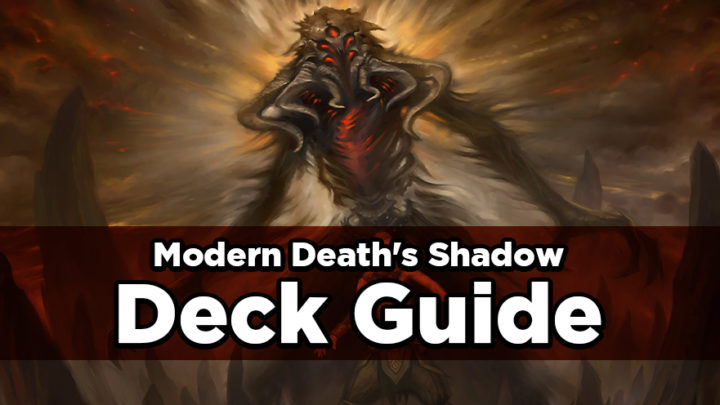Ikoria: Lair of Behemoths is certainly leaving a mark on Modern, as the format is being overrun with new companion cards. Midrange decks need to constantly adapt or risk losing metagame share, and Grixis Death’s Shadow is no exception. It’s rare that a single Standard-legal set can have this much of an impact on a deck like Death’s Shadow, or so I thought until 2019.
Naturally, I’ve been in the lab experimenting with different configurations of my favorite deck, and I’ve found something that feels new and powerful. But, first, it’s important to understand how we got from where we were to where we are now.
“Traditional” Grixis Death’s Shadow
Grixis Death’s Shadow has certainly gone through its paces since 2017, but the most recent pre-Ikoria version of the deck is a good starting place for learning what the deck does.
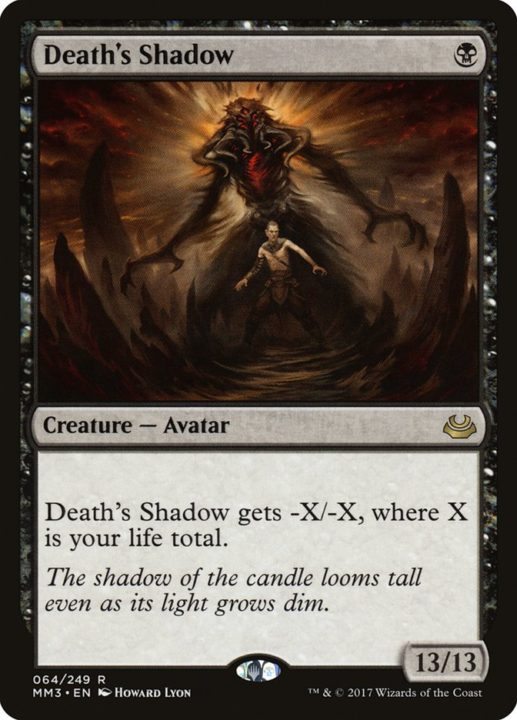
4 Gurmag Angler
4 Death’s Shadow
2 Snapcaster Mage
4 Street Wraith
4 Mishra’s Bauble
2 Serum Visions
4 Thought Scour
4 Stubborn Denial
2 Inquisition of Kozilek
4 Fatal Push
4 Thoughtseize
2 Dismember
1 The Royal Scions
2 Temur Battle Rage
1 Steam Vents
1 Blood Crypt
2 Watery Grave
3 Scalding Tarn
4 Polluted Delta
4 Bloodstained Mire
1 Swamp
1 Island
SIDEBOARD
2 Kolaghan’s Command
2 Damping Sphere
1 Plague Engineer
1 The Royal Scions
1 Disdainful Stroke
2 Drown in the Loch
1 Ashiok, Dream Render
1 Aether Gust
2 Collective Brutality
2 Mystical Dispute
The deck has several macro-components:
- Six discard spells
- Eight threats
- Two value creatures
- Two Temur Battle Rages
- Four Stubborn Denials
- Fourteen cantrips
- Six removal spells
- Seventeen lands
- Ten non-land ways to reduce your life total
This formula had been fine-tuned over time to consistently provide a turn two threat — either a good-sized Death’s Shadow or a Gurmag Angler. You’d also likely have at least one discard spell and one removal spell in your opening hand, which would provide a nice balance against an unknown opponent. The classic four Stubborn Denial and two Temur Battle Rage were lights out against the non-interactive decks.
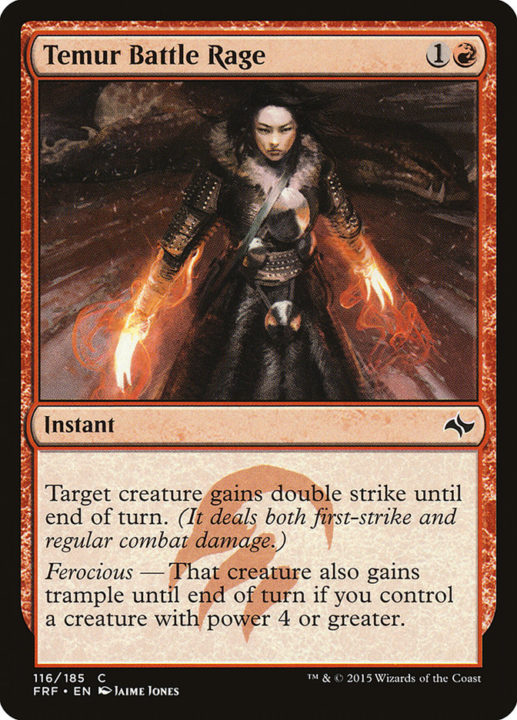
However, as times and cards in Modern change, the demands on Grixis Death’s Shadow change with them.
Lurrus of the Dream-Den
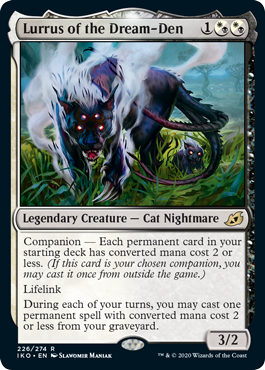
My initial read on Lurrus of the Dream-Den was that it wasn’t what you wanted to be doing in Death’s Shadow. It meant you had to cut Street Wraith — one of your best enablers — and your secondary threat, Gurmag Angler. It also ruled out The Royal Scions as a flex spot, but that wasn’t nearly as impactful as the other losses. Surely that much of a shake-up to the core of the deck couldn’t be worth it for 3/2 with lifelink that lets you buy back a Bauble, especially when it doesn’t play spectacularly with Death’s Shadow.
Some of you may remember this tweet:
I seem to have been wrong. I was thinking about the classic Grixis Shadow formula and wasn’t envisioning any possibilities outside of that. Lurrus asks you to break that traditional mold in order to reap the benefits of having an eighth card in all of your starting hands that has the potential to draw you multiple cards over the course of an interactive game. It admittedly took me a little while to see that exchange as profitable, and it wasn’t until I had seen the Grixis Delver decks sprouting up around Modern.
Grixis Lurrus Delver
Shortly after the release of Ikoria, twinlesstwin put up a 7-0 performance in an MTGO Challenge with this deck:

4 Delver of Secrets
2 Snapcaster Mage
4 Sprite Dragon
1 Inquisition of Kozilek
4 Serum Visions
2 Thoughtseize
1 Unearth
3 Archmage’s Charm
2 Drown in the Loch
4 Force of Negation
3 Lightning Bolt
2 Mana Leak
4 Opt
3 Mishra’s Bauble
1 Blood Crypt
3 Darkslick Shores
2 Island
4 Polluted Delta
4 Scalding Tarn
2 Spirebluff Canal
2 Steam Vents
3 Watery Grave
SIDEBOARD
3 Collective Brutality
2 Fatal Push
1 Flusterstorm
2 Grim Lavamancer
1 Lurrus of the Dream Den
3 Mystical Dispute
3 Tormod’s Crypt
The deck follows the old Death’s Shadow formula fairly closely, but trades discard spells for extra counterspells. But something seemed off to me about this deck, and after playing it, I concluded that it was Delver of Secrets. I wanted a better threat that was also incredibly efficient — something like, y’know, Death’s Shadow. Delver of Secrets just wasn’t closing the game quickly enough against the unfair decks, and the reactive cards in the deck weren’t really doing it for me, but Lurrus and Sprite Dragon showed promise.

My friend Dylan Hovey and I were talking about the Delver decks one day and I wondered how we could make Sprite Dragon even better without completely watering down the deck. I suggested Dreadhorde Arcanist because it casts a spell from the graveyard every turn to put a counter on Sprite Dragon without tying up all of your mana like Snapcaster Mage. We sketched up a list with Dreadhorde Arcanist, and that got the gears turning in my head. Why couldn’t I build a Death’s Shadow shell with these cards that cuts the reactive elements for cheap proactive spells to maximize both Sprite Dragon and Dreadhorde Arcanist?
Card Choices
My initial build featured the full eight copies of Thought Scour and Serum Visions to help out with Sprite Dragon and Dreadhorde Arcanist, but I found it led to a bit too much wheel-spinning. Too many of my starts lacked traction, and I wasn’t satisfied with having a discard spell in only 40% of my opening hands. Sprite Dragon and Dreadhorde Arcanist pay you off for casting your cantrips before combat, so Opt didn’t make the cut (though, if you’re playing Snapcaster Mage, I believe Opt is likely correct); I chose Sleight of Hand instead, as it provides the most information when you’re looking for a specific card.

I filled the remaining two cantrip slots with a pair of Inquisition of Kozilek to ensure I have discard spells in my opening hand more frequently. Without Street Wraith to turbo out ferocious Death’s Shadows, Stubborn Denial loses some value as a protection spell early in the game. But extra discard spells really help clear a path for Shadows in interactive match-ups until you can get Stub online. Burn’s popularity also drives up the stock of Inquisition of Kozilek, as it gives the deck a pain-free way to interact with their hand. This type of interaction is even more important now that Gurmag Angler isn’t around to provide a fast clock. Protecting Lurrus and Sprite Dragon is now Goal #1 in the match-up.
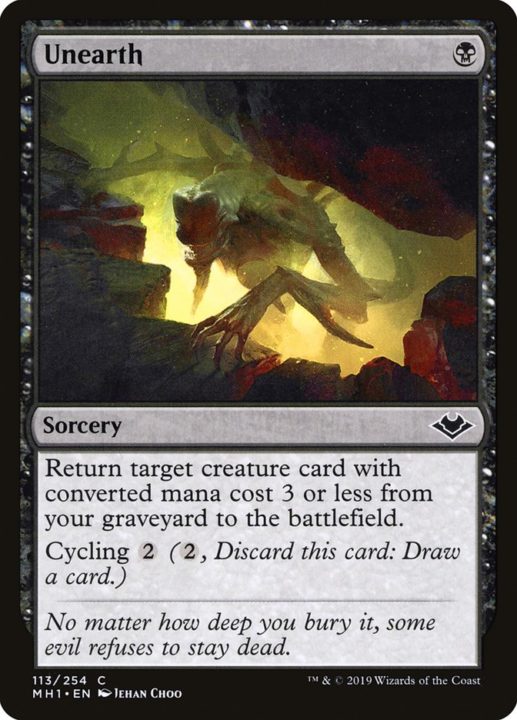
I also decided to include two copies of Unearth in the deck. Kolaghan’s Command is a staple in this spot, but I’ve found that the tempo gain from casting a cheaper spell is comparable to the value you gain from using two modes of Kolaghan’s Command. Plus, casting Unearth with Dreadhorde Arcanist is a beating in any interactive match-up. Attacking with Dreadhorde Arcanist to Unearth Lurrus to cast a Death’s Shadow all in the same turn is a backbreaking play for the small cost of one mana. It’s also important to be efficient during the turn you cast Lurrus in Lurrus mirrors; you can put multiple bodies into play and have mana left over to interact with your opponent’s board, which sets you up to have a devastating following turn.

Finally, I cleaned up the sideboard as I got a better idea of just what the deck wanted to do. Nihil Spellbomb covers hard graveyard decks like Dredge while also being good in Lurrus mirrors. I also moved Fatal Push into the main deck, opening up a slot of Spell Snare which is one of the highest-impact cards against Lurrus decks. Spell Snare tags a number of cards in Burn, plus Snapcaster Mage, Tarmogoyf, and Sprite Dragon.
Then There Were the Twos
Death’s Shadow is an excellent threat, but it can’t do the job alone. There are four solid two-mana secondary threats available: Sprite Dragon, Dreadhorde Arcanist, Snapcaster Mage, and Kroxa, Titan of Death’s Hunger. They’re each good in different spots, so your choice will depend on your play style and the expected metagame. Sprite Dragon is a more aggressive choice if you’re looking to generate tempo, get under your opponent, and keep them off-balance for just long enough. Meanwhile, Dreadhorde Arcanist generates a constant flow of cards that grow Sprite Dragon and while keeping your mana free so you can cast spells from your hand in the same turn.
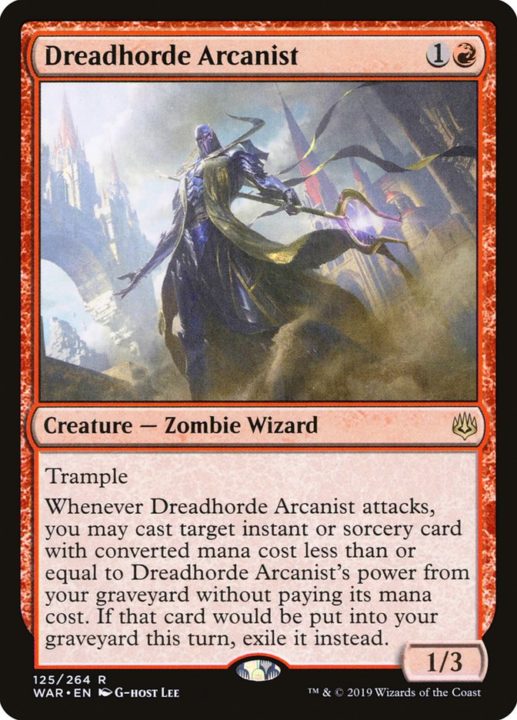
Snapcaster Mage and Dreadhorde Arcanist serve a similar role in the deck by providing value throughout the game. Snapcaster Mage is certainly the more reactive of the two and will serve you well if you have a more interactive, midrange play style. While it’s more mana-intensive than Dreadhorde Arcanist, Snapcaster Mage plays better with Lurrus because you get extra value each time you cast it from your graveyard. Choosing one over the other is really a question of efficiency vs. power.

Kroxa is perhaps the slowest clock of them all, but possibly the most powerful in interactive match-ups. You can get an ETB trigger from Kroxa every turn that Lurrus is in play, which is incredibly powerful against any deck that cares about having cards in hand. And once the opponent is out of resources, you can escape Kroxa to end the game quickly.

I believe these two-drops are best considered in pairs: Sprite Dragon and Dreadhorde Arcanist are best if you want to play an aggressive tempo deck, and Snapcaster Mage and Kroxa are best if you want more power at the cost of speed and efficiency.
Where Do We Go From Here?
I think it only makes sense that I present you with both an updated version of my Dreadhorde Arcanist/Sprite Dragon build, and my take on Oliver_Hart’s version with Snapcaster Mage and Kroxa.
Tempo Lurrus

4 Death’s Shadow
2 Dreadhorde Arcanist
4 Sprite Dragon
2 Fatal Push
2 Inquisition of Kozilek
4 Lightning Bolt
4 Serum Visions
2 Sleight of Hand
4 Stubborn Denial
4 Thoughtseize
2 Unearth
1 Temur Battle Rage
1 Seal of Fire
2 Dismember
4 Mishra’s Bauble
2 Blood Crypt
3 Bloodstained Mire
1 Island
4 Polluted Delta
4 Scalding Tarn
1 Steam Vents
1 Swamp
2 Watery Grave
SIDEBOARD
1 Cling to Dust
1 Inquisition of Kozilek
1 Nihil Spellbomb
1 Temur Battle Rage
1 Spell Snare
1 Drown in the Loch
1 Aether Gust
3 Collective Brutality
1 Disdainful Stroke
2 Kolaghan’s Command
1 Engineered Explosives
1 Lurrus of the Dream-Den
I’ve been happy with this version of the deck so far, but the second Temur Battle Rage in the main could become a liability against other interactive decks. Modern has more removal spells now than it has for some time, but TBR is still the best card against a lot of the unfair decks, so I want to find a home for it in the sideboard. Seal of Fire is also good against Humans, and it’s great to have in Lurrus mirrors. Engineered Explosives is a nice catchall that also plays well with Lurrus, so it’s hard to go wrong by having a single copy. Drown in the Loch picks up additional points, as much of Modern is graveyard-focused at the moment, and it’s always been quite good against the fair decks out of the sideboard.
Midrange Lurrus

4 Death’s Shadow
2 Kroxa, Titan of Death’s Hunger
4 Snapcaster Mage
2 Inquisition of Kozilek
4 Thoughtseize
2 Unearth
2 Dismember
1 Drown in the Loch
1 Fatal Push
2 Kolaghan’s Command
3 Lightning Bolt
2 Opt
3 Stubborn Denial
4 Thought Scour
4 Mishra’s Bauble
2 Blood Crypt
4 Bloodstained Mire
2 Fiery Islet
4 Polluted Delta
4 Scalding Tarn
1 Steam Vents
1 Swamp
2 Watery Grave
SIDEBOARD
1 Ceremonious Rejection
3 Collective Brutality
1 Damping Sphere
3 Disdainful Stroke
1 Engineered Explosives
1 Lurrus of the Dream–Den
2 Nihil Spellbomb
1 Seal of Fire
2 Temur Battle Rage
I think the base for this deck is quite good. I cut a Fatal Push for a third Stubborn Denial in this build, as you’re more likely to struggle against Burn. Mountains were never really impressive and frequently made for awkward draws, but I wanted to keep 20 lands in this version, so I added a second Fiery Islet for some flood insurance. Islet also provides a small amount of self-inflicted damage to help turn on Death’s Shadow and Stubborn Denial earlier in the game.
In the sideboard, I’ve included two copies of Temur Battle Rage. It’s the best card against big-mana decks and Storm because we tend to lose games that go long. Tormod’s Crypt is an okay graveyard hate card, but worse than Battle Rage at putting the game away against Dredge.
Hopefully everyone remains as excited as I am to continue pushing the boundaries of Grixis Death’s Shadow. If you have any thoughts on the decklists I’ve presented here, you can always contact me on Twitter at @RappaciousOne, or hop into my Discord, where we’re always talking Shadow.

Michael Rapp is a Modern specialist who favors Thoughtseize decks. Magic sates his desire for competition and constant improvement.

